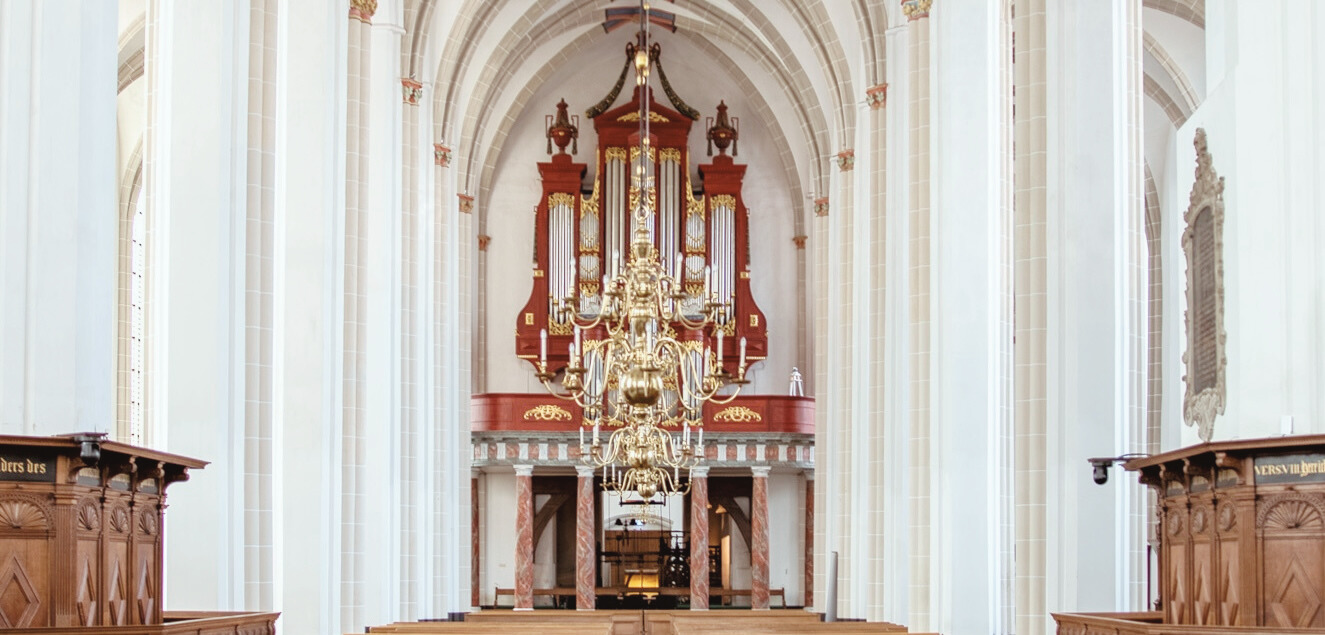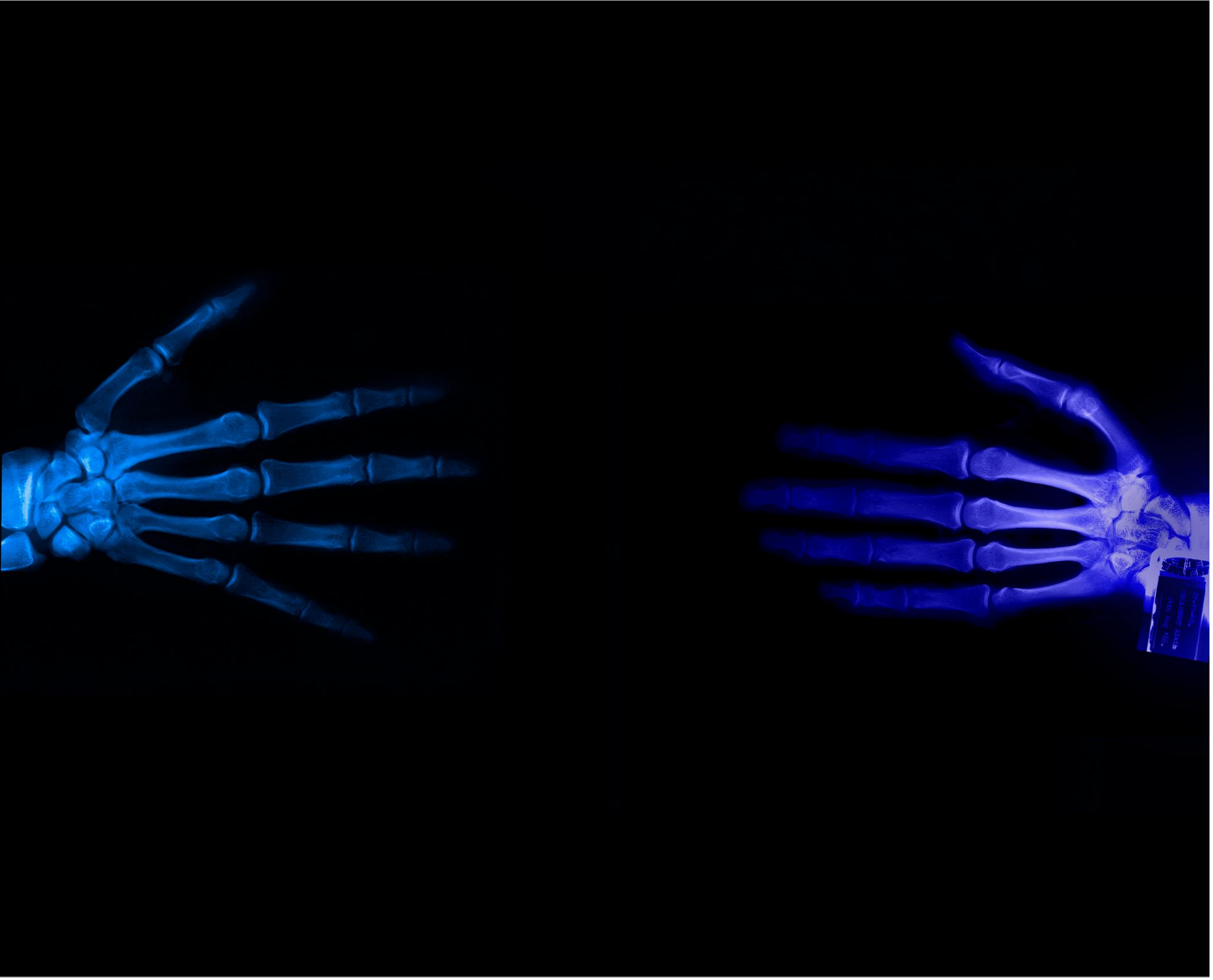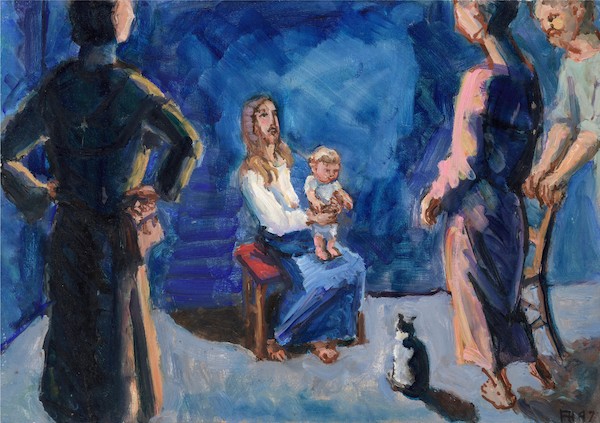Marta Jakobovits is a professional ceramist. Her practice is focused on exploring the ceramic techniques of casting, modelling, firing, and glazing. She works with shape, colour, and texture, and has built a vast detailed, personal library of how her use of chemicals informs the physical and vice versa. Her installations involving her ceramics often present a special visual dialogue with natural forms, stones, leaves, tree barks, and other found objects.
She has said of her approaches, “The instinctive, sensory way of touching and feeling clay connects me strongly to the primal messages of the material. Ceramics is such a special means of approaching the deep secrets of our existence, for me, ceramics is a special language. Through this special language of clay, I try to understand myself as a human being and my relationship with nature. There is an ongoing intention to place the resulting shapes and families of shapes in a personal context with natural objects and materials or even directly in the natural environment. There is a constant dialogue with the nature around me. I am driven by a strong curiosity – I carry out endless research on materials and glazes, using different techniques, processing possibilities and allowing the results to generate new forms, new ideas.”

Photograph by Richard Ivey. Courtesy of the Artists and Elizabeth Xi Bauer Gallery, London.
Jakobovits graduated from the Institute of Fine Arts in Cluj-Napoca, Romania. In 2006, she earned a Doctorate in Liberal Arts from the University of Arts and Design in Budapest, Hungary. In 2013, she received the Hungarian Knight’s Cross of Merit. In 2010, she was presented the Diploma of Excellence of the Romanian Ministry of Culture and in 2007, she obtained The Fire Arts Award of the Union of Artists from Romania, the highest professional recognition Romania awards. In 2023, she received membership from the International Academy of Ceramics in Switzerland.
She has had retrospective exhibitions at the National Contemporary Art Museum of Bucharest (2021-22) and at Țării Crișurilor Museum Oradea (2024). She is currently exhibiting with Anderson Borba in Harvest at the Elizabeth Xi Bauer Gallery in Deptford, London, UK (7 March – 26 April 2025).
JE: In the catalogue for your recent retrospective, we are told that during your student days, you preferred simple, simplified forms – larger and smaller spheres, some in relief, but grouped in such a way that they associate, becoming charged with expressiveness, suggesting a life of the group in relation to the ambient space. What was it that you were discovering then that has stayed with you since?
MJ: From the beginning, when I first encountered the possibilities of ceramic materials, I was deeply fascinated by giving identity to forms. I sought to understand how the inner forces—the relationship between the constituent parts of a form and the character of their joints—determined the form's identity.
I approached form with sincere curiosity from the outset, and that curiosity has remained with me throughout my life. I always feel there is more to discover and a deeper understanding to achieve.

Photograph by Richard Ivey. Courtesy of the Artists and Elizabeth Xi Bauer Gallery, London.
JE: In the catalogue, it says you continued to work in cycles, on groups of forms that suggest continuity. Many of the works are grouped in such a way as to express search, to suggest the initiatory path for a journey into the depths of the human being to find the way through which we could be in harmony with the universe. You have said: "[My work is] a personal approach to trying to make the invisible of the conscious and subconscious psyche visible through [my chosen] materials. This is an ongoing process; it is very important to me. This is my life. Making shapes, families of shapes, putting them in a relationship with natural materials, such as sand, pebbles, leaves, different plants, barks and shells, or even bringing them back as a reverence for nature. [It is] an intuitive dialogue between me and what is outside of me." What is it about shapes in relationship that has become central to you and to your work?
MJ: The revelation that inner forces deeply influence the identity of a form was a key moment for me. When I create forms, whether they are human-like or abstract shapes, I feel it is essential to approach these forces with respect and humility. This respect allows me to discover their role in defining the form’s identity.
As my relationship with nature has deepened, I view it as a great teacher. The visual and spiritual dialogue with forms has continued evolving as I’ve grown in understanding of the natural world.

Photograph by Richard Ivey. Courtesy of the Artists and Elizabeth Xi Bauer Gallery, London.
JE: At the time of Nicolae Ceaușescu’s regime, your artistic practice became a form of release from the oppressive forces around you. Along with your late husband, the renowned painter Miklós Jakobovits, you became part of the inner circle of important Transylvanian artists who were vigilantly creating art as an act of resistance against the dictator and a regime that did not allow for such freedoms. You were all careful to cover your tracks and had to remain ever vigilant. In what ways did art become your "vehicle to survive" this period?
MJ: Authentic art, as a realm of spiritual freedom, always opposes oppressive forces. Despite the Ceaușescu regime, we felt the arts offered us a unique form of freedom. It was certainly easier to endure in our youth, and we were fortunate to study art in a high school studio under internationally recognised teachers like Ana Lupaș and Mircea Spătaru. This was a great gift, almost providential, as was working alongside a group of six fellow students who shared a deep passion for the arts, discovering the wonders and challenges of artistic creation.
JE: You have spoken of feeling inspired by the effortlessness of works by artists such as Constantin Brâncuși, Henry Moore, Lucie Rie, Hans Coper, and Regina Heinz. What aspects of their work, and that of others, have been an inspiration to you?
MJ: Many artists have strongly influenced me, but I have always been selective in a personal and subjective way. I was deeply impressed by Constantin Brâncuși and his ability to express the essence of simple forms. The surprising vitality and inner tension in Henry Moore's sculptures are remarkable. The consistency, simplicity, and beauty of the ceramics made by Lucie Rie, Hans Coper, Marta Nagy, Maria Geszler, Eugenia Pop, Regina Heinz, and Cristina Popescu Russu are also profoundly admirable. Many artists have given me a profound spiritual experience, and their works are a great pleasure to contemplate.
JE: Your works have been described as prayers in clay, and it has been said that you view art as a form of prayer. You have said: "These ceramic pieces represent the imprint of my soul and hands as well as the spiritual relation with segments of visual arts of the groups of objects, installations, and spiritual islands created through different senses, experiments, and material associations." In what ways do you find your artistic practice spiritual?
MJ: Artistic expression is incredibly diverse. There are many approaches, from tactile to conceptual, from meditation to aggression, from expressing love and admiration for the miracles of existence to expressing hatred or deep disappointment. All these approaches have their place.
However, I gravitate toward deep, intuitive approaches that bring visual and mental peace. I believe everyone’s life is a pilgrimage, a journey full of ups and downs. Artists have the ability to translate that journey, making it visible, audible, or readable, depending on their medium.
I believe everyone’s life is a pilgrimage, a journey full of ups and downs. Artists have the ability to translate that journey, making it visible, audible, or readable, depending on their medium.
JE: You often place your works on the floor, emphasising the idea of a path to be travelled. It has been said that the notion of pilgrimage is a powerful concept for you, spiritually and morally—a journey aligned with one’s faith and beliefs, manifested physically or metaphorically. What does pilgrimage mean to you in relation to your work?
MJ: I often place my work on the floor to emphasise the idea of a path to be travelled. It is a deeply spiritual gesture that allows for a direct approach to the mystery of existence. For me, pilgrimage is an ongoing process translated into ceramics. It is a personal approach to making the invisible aspects of the conscious and subconscious mind visible through tangible materials.
This process is very important to me—it is my life. I create shapes and families of shapes, placing them in relationship with natural materials like sand, pebbles, leaves, plants, bark, and shells, as a reverence for nature. It is an intuitive dialogue between me and the world outside of me.

Photograph by Richard Ivey. Courtesy of the Artists and Elizabeth Xi Bauer Gallery, London.
JE: You have developed your own way of distilling forms, observing and connecting with nature. You interact with it through ceramics, allowing the elements of earth, water, fire, air, and spirit to shape your organic forms. You have said: "[I feel] very close to nature... I keep collecting little things, pebbles, stones, bark, shells, and all sorts of little pieces from nature, believing that they are telling me something I have to decipher." Can you tell us more about the role that nature plays in your work?
MJ: Many small fragments—humble, random pieces, whether handmade or found in nature—speak to me. I call them “signs of breathing.” When I contemplate them, I feel they may hold hidden messages. They often serve as an energising starting point in a visual dialogue, opening new, surprising paths if I take the time to listen and decipher them.
Working with shapes, colours, textures, and space in ceramics is incredibly captivating and always presents a profound visual and spiritual challenge.
I have been involved in glaze research for over thirty years, fascinated by the possibilities created through various interventions in glaze composition. Despite having a library full of hundreds of tests from different ceramic firings, I am driven to continue experimenting with new tests and research.
Curiosity is what drives me forward.
JE: You have recently had a major retrospective. In what ways have you been able to use the latest retrospective to investigate and discover what comes next in your artistic journey?
MJ: My latest retrospective, like any exhibition I have had so far, has inspired me to continue my artistic journey. It allows me to reflect on the results but also reminds me that there is always more to explore. The next step feels even more exciting.
%20(1).png)













